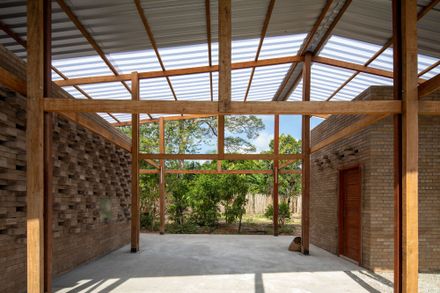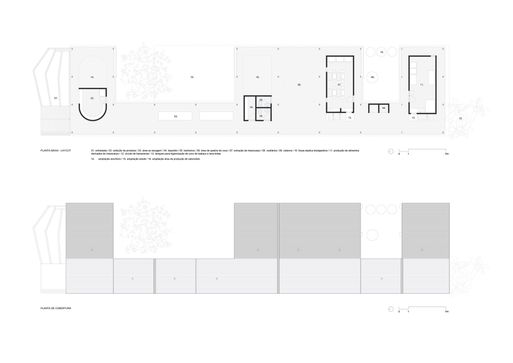
Babassu Harvesters Reference Center
ARCHITECT / LIGHTING DESIGN
Ana Lúcia Hizo
ARCHITECT / COORDINATOR
Christian Teshirogi
CONTRACTOR
Miguel Noleto Machado
AREA
275 M²
YEAR
2022
LOCATION
Vitória Do Mearim, Brazil
CATEGORY
Cultural Center
Text description provided by architect.
The formation of organized associations within rural communities has allowed us to gain a deeper understanding of the dynamics of processing babaçu.
The project represents an innovation in the daily lives of the community, since, throughout its development, we worked alongside them in a series of collective design workshops.
By taking various approaches to finding solutions whether through images, dialogues, or speculations we organized the utility of the space and hierarchies within the built ensemble. In this sense, architecture functions as a means to provide the community with freedom and the future of the project with flexibility to adapt to new demands.
Even with the focus on productive activity, we identified that every project opportunity should necessarily be an opportunity to gather and unite. Keeping in mind that the village has scarce resources and no shared facilities, the project is organized around a series of courtyards, both covered and uncovered, as spaces for community gatherings.
Given that more than 40 women make up the group of babaçu harvesters, most of whom are mothers and grandmothers, the workspaces also transform into places for meeting, social mobilization, and recreation for their families and neighbors.
The project defines its constructive features based on a reinterpretation of local materials and building techniques.
The region still has many single-family homes made of wattle and daub. The village is located 35 km from the nearest urban center: the city of Vitória do Mearim.
Depending on the season, transportation can only occur by boat, as the village of Sumaúma, situated within the Mearim River Basin (UEMA/ NuGeo, 2009), floods with the waters of the Grajaú and Igarapé Ipixuna rivers, which flow into the Mearim River, making land transport impossible during the rainy season.
Considering the geographical conditions, the difficult access, and the understanding of local techniques and resources, we opted to use compressed earth bricks. In this reinterpretation of adobe housing, the maintenance of the built structure is minimized over time.
This self-supporting structure defines the work and living spaces. A second, independent structure to support the roof was made with local wood, sourced from forest resources authorized by IBAMA. This double roof system offers better thermal comfort conditions, ensuring permanently shaded and ventilated areas.
At the same time, it provides a protected construction site where the different stages of the building process could take place. First, the foundations were built, and then the roof was constructed, creating a sheltered area for brick production on-site.
The roof includes gutters for rainwater harvesting, and the project incorporates systems for treating sewage and greywater, through a biodigester septic tank and banana tree circle, respectively.
All these techniques were discussed and disseminated within the community, encouraging their replicability to achieve a greater environmental impact than the project itself.






















